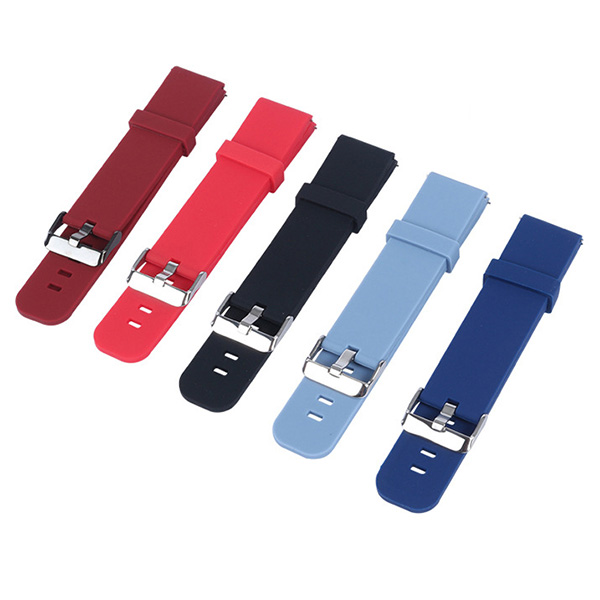Detailed explanation of the production process of liquid silicone watch straps
The process of producing liquid silicone rubber (LSR) watch straps involves multiple refinement steps, combining material science and mold forming technology. The following is a detailed process flow:
1. Raw material preparation
Liquid Silicone (LSR): A two-component (A/B component) material that needs to be mixed in precise proportions (usually 1:1). Component A contains platinum catalyst, while component B contains crosslinking agent.
Additives: May include colorants (Pantone color matching) and UV resistant agents, ensuring compatibility with LSR.

2. Mold design and manufacturing
Mold material: high-strength steel or aluminum alloy, with a mirror polished surface to reduce demolding marks.
Structural design: including injection port, exhaust groove, and ejector pin system. Complex designs may use multi slider molds (for textures or hollow structures).
Temperature control: The mold temperature machine is integrated to maintain the mold temperature between 180-220 ° C (depending on the LSR model).3. Liquid silicone molding
Mixing and Injection Molding:
The A/B components are accurately mixed by a metering pump, and the uniformity is ensured by a dynamic mixer.
The injection pressure is about 100-300 bar, and it is injected into the mold through a cold runner system (to avoid premature solidification caused by hot runners).

solidification:
LSR undergoes an addition reaction (platinum catalyzed) at high temperatures, and the curing time is usually 20-60 seconds (depending on the wall thickness).
Exhaust:
Mold design should avoid bubbles, and if necessary, use a vacuum injection molding machine (vacuum degree ≤ 0.1 bar).
4. Post processing technology
Deburring: Hand trimming or freeze deburring (spray removal after low-temperature embrittlement at -40 ° C).
Surface treatment:
Spray coating: Apply a PU coating after attaching a reinforcement layer (such as Primer) to enhance the tactile sensation.
Printing: UV transfer printing of logos


